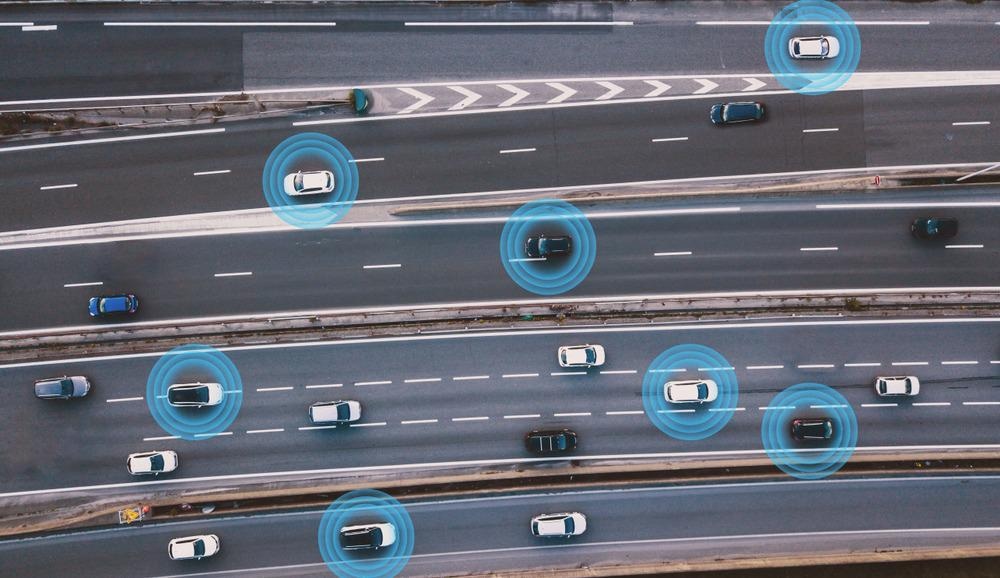Automated driving systems have been one of the hot-button topics of the past 5 years. However, like any innovative technology, there are opportunities and risks associated with automated vehicles. A new study published in Sustainability has addressed the questions of the challenges facing automated driving technology and its implementation worldwide.

Study: Opportunities, Challenges, and Uncertainties in Urban Road Transport Automation. Image Credit: Song_about_summer/Shutterstock.com
A Brief History of Urban Transport Automation
Urban transportation has undergone many changes over the centuries. From horse and livestock power to steam, internal combustion engines and, more recently, electric and hybrid vehicles, one constant has always remained – the requirement of a human to operate the mode of transport.
The concept of automated vehicles has existed for decades, with the first ideas formulated and defined by 1940. General Motor’s “Futurama” and the book Magic Motorways by Norman Bel Geddes were some of the first forays into realizing an automated future for urban transportation.
The development of automation technologies started in earnest in the 1950s and 1960s, with the aim to fully automate the driving experience. Limited technologies that automated specific tasks were installed in production vehicle models. By the 1970s, automated urban metros and the first automated urban people movers, known as Personal Rapid Transport Systems, which moved people on dedicated guideways, were introduced.
The increasing sophistication of information technology systems since the 1990s has driven innovation and research interest in automation for the transportation sector. Over the past decade, technological strides have been made by several companies such as Tesla and Google to invest in and introduce fully automated vehicles to the road. Despite the optimism of the media and public over the past 5 years, several challenges still exist for automated driving systems.
The Study
The new study published in Sustainability has explored the question of the opportunities and risks associated with the implementation of fully automated driving systems. Due to the rapid growth and obsolescence of the literature in the field, the author has not presented a literature review but rather, has cited a limited number of key references that provide directly relevant definitions and substantial developments in the field.
The author has identified that technical literature from the past 5 years has been permeated by unrealistic expectations that are more based on optimism and hope than empirical data. In order to balance the discussion, the author has instead concentrated on specific real-world transportation applications that have the potential for automation and the technical challenges and uncertainties that limit the timing and breadth of automated vehicle deployment.
The study discusses several areas. Terminology and classification of automated driving system types and vehicle-infrastructure cooperation are presented in the paper, with a look at SAE International’s taxonomy and definitions documents. The necessity of supporting physical and digital infrastructure is explored, along with an overview of current automated urban transport systems, necessary enablers of urban deployment, and public perceptions and managing uncertainties are also explored in the paper.
Some potentials of automation for mitigating urban transportation issues highlighted in the study include reduced energy use and emissions, reduced delays at intersections, potential safety improvements and crash reductions, increased accessibility for disadvantaged populations by implementing low-cost ride-hailing services, and reduced traffic congestion associated with courier delivery due to smaller vehicles.
However, potential disbenefits include reduced traffic safety if faulty technology is introduced too soon, reduced traffic efficiency if technology is overcautious at intersections and employment displacement for individuals who currently earn a living from driving.
However, the “nightmare scenario” of vehicular traffic surging ahead envisioned by researchers and environmental advocates and worsening congestion and environmental and energy impacts are unlikely, according to the author, due to more sober assessments of technological capabilities and deployment issues and the likelihood of the technology lagging behind the rate of urban electrification. For the foreseeable future, automated driving systems will be regulated to narrow segments of the global vehicle fleet.
The author has also identified several uncertainty factors. Assessing these is difficult because companies closely guard the true development of automated driving technologies. Uncertainties include how sensor perception and hazard recognition capabilities compare with human capabilities, the cost, and schedules associated with processes, what kind of supporting infrastructure will be available to augment capabilities, and how the deployment of automated vehicle systems fits into different global safety regulatory frameworks.
The opportunities and risks, whilst much-hyped over the last 5-10 years of automated driving systems are still poorly understood, especially as the technology is still within its infancy and companies keep development a closely guarded secret. The study in Sustainability has provided a significant contribution to the field, identifying current perspectives, potential risks, benefits, and opportunities, and recommendations for future research directions in the automated driving systems industry.
Further Reading
Shladover, S.E (2022) Opportunities, Challenges, and Uncertainties in Urban Road Transport Automation [online] Sustainability 14(3) | mdpi.com. Available at: https://www.mdpi.com/2071-1050/14/3/1853
Disclaimer: The views expressed here are those of the author expressed in their private capacity and do not necessarily represent the views of AZoM.com Limited T/A AZoNetwork the owner and operator of this website. This disclaimer forms part of the Terms and conditions of use of this website.